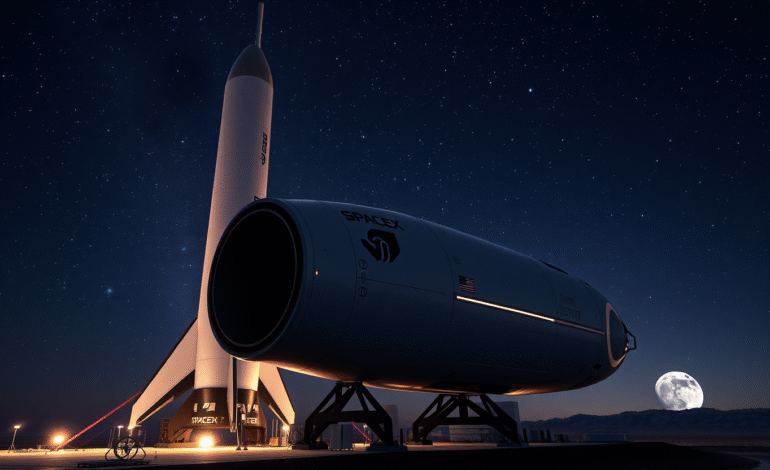SpaceX’s Starship Undergoes Intense Fault Tolerance Testing Aiming for Mars-Capable Rocket and Lunar Landings

In a significant development for SpaceX’s ambitious Mars colonization plans, the company conducted a test flight of its reusable Starship rocket on Tuesday evening. The focus of this mission was to push the vehicle’s limits and understand its capabilities in the face of mishaps and faults – a crucial aspect for SpaceX’s vision of a reusable spacecraft that can withstand operational challenges.
The flight aimed to scrutinize the heat shield, propulsion redundancy, and the relighting of Raptor engines – all critical components for future missions involving Starlink satellites, commercial payloads, and potentially astronauts.
One of the most significant engineering challenges facing SpaceX is the heat shield. Elon Musk himself acknowledged in May 2024 that a reusable orbital return heat shield represents the “biggest remaining problem” to achieving complete rocket reusability. The upper stage, or Starship, features thousands of hexagonal ceramic and metallic tiles covering its belly, forming the heat shield.
During this test flight, SpaceX deliberately subjected the ship to extreme thermal stress by intentionally damaging certain sections of the heat shield and experimenting with an actively cooled tile material. This was done to gather real-world data and refine designs, ensuring safety and reliability for future missions.
The Space Shuttle Columbia incident in 2003 serves as a stark reminder of thermal shield vulnerability. A piece of insulating foam struck the thermal tiles on the left wing of Columbia during liftoff, leading to the tragic loss of all seven astronauts upon reentry. Today, SpaceX is meticulously studying performance even in worst-case scenarios to prevent such incidents.
Propulsion redundancy was also tested extensively during this flight. Engineers intentionally disabled one of the three center Raptor engines during the final phase of the burn and switched to a backup engine. This successful rehearsal for an engine-out event is a significant step towards ensuring safe, reliable deep-space missions.
In addition, SpaceX reported the in-space relight of a Raptor engine – a feat achieved for the second time by the company. Reliable engine restarts will be essential for deep-space missions, propellant transfers, and certain payload deployment missions.
SpaceX’s progress is crucial for NASA’s Artemis program, which aims to deliver astronauts safely to the lunar surface. NASA has awarded SpaceX over $4 billion for a lunar version of Starship, with the first lunar landing currently scheduled for mid-2027.
NASA sets stringent safety standards according to the mission profile, accepting a higher degree of risk for uncrewed service missions and a very low risk for crewed transport. The agency will only approve astronaut flights once these safety standards are demonstrated through testing and flight data. These safety standards remain consistent for Starship despite its larger size, which increases potential failure modes.
Looking ahead, SpaceX plans to implement numerous changes in the next version of Starship, known as Block 3. This includes a higher-thrust Raptor engine, upgrades to the flaps, and updates to avionics, guidance, navigation, and control systems. The goal is to move closer to routine operations and eventually achieve Musk’s vision of “Starship launches more than 24 times in 24 hours.”






